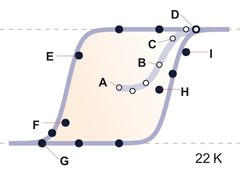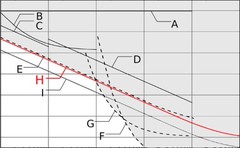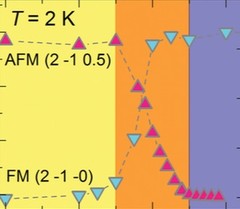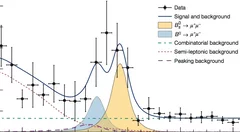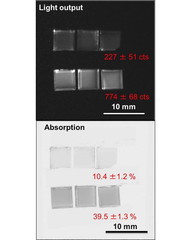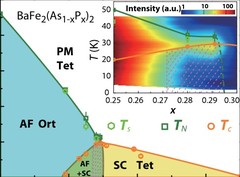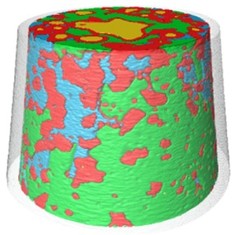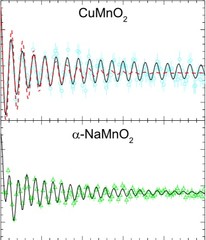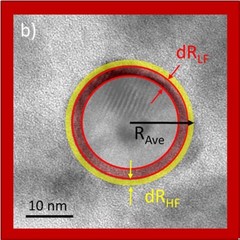NUM division - Publication Highlights
Magnetoelectric domain control in multiferroic TbMnO3
The manipulation of domains by external fields in ferroic materials is of major interest for applications. In multiferroics with strongly coupled magnetic and electric order, however, the magnetoelectric coupling on the level of the domains is largely unexplored. We investigated the field-induced domain dynamics of TbMnO3 in the multiferroic ground state and across a first-order spin-flop transition.
Constraining interactions mediated by axion-like particles with ultracold neutrons
We report a new limit on a possible short range spin-dependent interaction from the precise measurement of the ratio of Larmor precession frequencies of stored ultracold neutrons and 199Hg atoms confined in the same volume. The measurement was performed in a ∼1μT vertical magnetic holding field with the apparatus searching for a permanent electric dipole moment of the neutron at the Paul Scherrer Institute.
Controllable Broadband Absorption in the Mixed Phase of Metamagnets
Materials with broad absorption bands are highly desirable for electromagnetic filtering and processing applications, especially if the absorption can be externally controlled. Here, a new class of broadband-absorption materials is introduced. Namely, layered metamagnets exhibit an electromagnetic excitation continuum in the magnetic-field-induced mixed ferro- and antiferromagnetic phase.
Observation of the rare BS0 →μ+μ- decay from the combined analysis of CMS and LHCb data
The standard model of particle physics describes the fundamental particles and their interactions via the strong, electromagnetic and weak forces. It provides precise predictions for measurable quantities that can be tested experimentally. The probabilities, or branching fractions, of the strange B meson (BS0) and the B0 meson decaying into two oppositely charged muons (μ+ and μ-) are especially inter- esting because of their sensitivity to theories that extend the standard model. The standard model predicts that the BS0 →μ+μ- and B0 →μ+μ- decays are very rare, with about four of the former occurring for every billion Bs0 mesons produced, and one of the latter occurring for every ten billion B0 mesons.
Isotopically-enriched gadolinium-157 oxysulfide scintillator screens for the high-resolution neutron imaging
High-resolution neutron imaging (Neutron Microscope project) requires highly efficient scintillator screens. Our aim is to achieve sub-5µm spatial resolution. Here, we demonstrate the feasibility of the production of isotopically-enriched gadolinium oxysulfide scintillator screens for the high spatial-resolution neutron imaging. Approximately 10 g of 157Gd2O2S:Tb was produced in the form of fine powder (the level of 157Gd enrichment above 88%).
Structural and Magnetic Phase Transitions near Optimal Superconductivity in BaFe2(As1-xPx)2
We use nuclear magnetic resonance (NMR), high-resolution x-ray, and neutron scattering studies to study structural and magnetic phase transitions in phosphorus-doped BaFe2(As1-xPx)2. Previous transport, NMR, specific heat, and magnetic penetration depth measurements have provided compelling evidence for the presence of a quantum critical point (QCP) near optimal superconductivity at x=0.3.
Mass Density and Water Content of Saturated Never-Dried Calcium Silicate Hydrates
Calcium silicate hydrates (C-S-H) are the most abundant hydration products in ordinary Portland cement paste. Yet, despite the critical role they play in determining mechanical and transport properties, there is still a debate about their density and exact composition. Here, the site-specific mass density and composition of C-S-H in hydrated cement paste are determined with nanoscale resolution in a nondestructive approach.
Magnetic inhomogeneity on a triangular lattice: the magnetic-exchange versus the elastic energy and the role of disorder
Inhomogeneity in the ground state is an intriguing, emergent phenomenon in magnetism. Recently, it has been observed in the magnetostructural channel of the geometrically frustrated α-NaMnO2, for the first time in the absence of active charge degrees of freedom. Here we report an in-depth numerical and local-probe experimental study of the isostructural sister compound CuMnO2 that emphasizes and provides an explanation for the crucial differences between the two systems.
Interfacial dominated ferromagnetism in nanograined ZnO: a μSR and DFT study
Diamagnetic oxides can, under certain conditions, become ferromagnetic at room temperature and therefore are promising candidates for future material in spintronic devices. Contrary to early predictions, doping ZnO with uniformly distributed magnetic ions is not essential to obtain ferromagnetic samples. Instead, the nanostructure seems to play the key role, as room temperature ferromagnetism was also found in nanograined, undoped ZnO.
